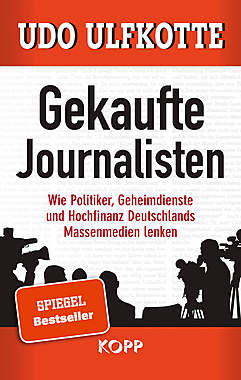-->
--------------------------------------------------------------------------------
Rense.com
--------------------------------------------------------------------------------
Iraqi Commander Swears
He Saw US Evacuate Saddam
Bill Dash
8-17-03
Author's Note: This article first appeared on FarShores on 8/12/03. In the interest of accuracy, I have pulled that draft and replaced it with this updated version.
Film will soon be made public of an Iraqi Army officer describing how he saw a US Air Force transport fly Saddam Hussein out of Baghdad. The explosive eyewitness testimony was shot by independent filmmaker Patrick Dillon, who recently returned from a risky one-man odyssey in Iraq. In the film, the officer, who told Dillon that he commanded a special combat unit during the battle for Baghdad airport and whose identity is temporarily being withheld, explains in detail how he watched as the Iraqi dictator and members of his inner circle were evacuated from Iraq's capital by what he emphatically insists were United States Air Force cargo planes.
Presently, the only copies of the film (which I have not yet seen) are in New York City. People who have viewed it describe it to me as compelling.
Dillon told me by phone that, prior to the final assault on the capital by American ground forces, the officer had been entrusted with the near impossible job of ensuring that one of Baghdad airport's runways would remain operational no matter what. In civilian life the officer is reportedly a highly trained civil engineer specializing in airport operations. He states he was selected to command this hazardous mission in part because of his expertise in concrete surface construction. He goes on to report that there was a ferocious battle at the airport, with losses on both sides far worse than the mainstream news services acknowledge. He deviates even further from officially sanctioned accounts, by unequivocally stating that the battle for control of the airport actually lasted several days longer than commonly believed, dragging on through April 8th and culminating around dawn on the morning of the 9th. Most news sources cite April 4th as the day when the airport fell. But many conventional accounts also acknowledge, if only in passing, uncertainty as to exactly when the airport was fully subdued,frequently offering the 5th and the 6th as other possibilities. Virtually everyone agrees on April 9th as the day that the battle for the entire city officially ended.
In any event, the officer adamantly maintains that his combat/construction brigade, despite heavy casualties, managed to hold off US troops and preserve a useable length of runway right through the night of April the 8th.
Then early on the morning of April 9th, as the remnants of his unit were close to being overrun, a general cease-fire was unexpectedly declared for 6 AM. Shortly after it went into effect, and in broad daylight, the officer claims a motorcade of 10 Mercedes stretch limos suddenly barreled onto the airfield, carrying Saddam and his entourage. Almost simultaneously, a flight of what the officer asserts were four USAF Hercules transports swooped down and landed on the lone stretch of intact runway. All four C-130s dropped their rear loading ramps and the limos drove up into the cargo bays of the waiting planes, which then took off. The officer insists he has no idea where Saddam or any of the other members of his party may have gone.
Dillon says his film lends major support to what many have believed for years: that Saddam was little more than an american tool, a stage-managed"evildoer", just one in a long line of useful villains bought and paid for by the United States in order to better manipulate international politics and commerce. The gutsy New York based filmmaker, who risked his life amid the chaos of postwar Iraq, says that much of the Iraqi populace believes Saddam is not dead and they worry he could still exact revenge from afar. While many Iraqi civilians initially welcomed American forces, Dillon told me most Iraqis, having now had a bitter taste of American occupation, feel enraged with the US and its soldiers. Dillon said living conditions in Iraq are horrible and that little of significance is being done to relieve the situation.
Based on what he saw during his travels, Dillon told me he's convinced the war and its sweeping devastation of the Iraqi nation is in reality a mind boggling charade. Rather than liberating Iraq, its actual purpose is to corral Iraq's huge oil reserves and to serve as a pretext for channeling tens of billions in largesse to favored American corporations like Haliburton and Bechtel. As an example, Dillon pointed to how US air strikes systematically obliterated every last Iraqi telecommunications facility from one end of the country to the other, a measure he maintains vastly exceeded all practical military necessity. Then, without even the pretense of a competitive bid, Washington gifted WorldCom, the near bankrupt US telecom giant responsible for the greatest fraud in financial history, with a huge multi-billion dollar contract to build Iraq a new nationwide state-of-the-art telephone system.
Copyright ©2003 - Bill Dash
Alternate URL: www.farshores.filetap.com/
Disclaimer
Email This Article
MainPage
http://www.rense.com
This Site Served by TheHostPros
|
-->Rumor Mill Is Abuzz With Saddam Sightings
Sun Aug 31, 1:28 PM ET
By SCHEHEREZADE FARAMARZI, Associated Press Writer
MOSUL, Iraq - The Saddam Hussein (news - web sites) rumor mill runs swiftly through the northern city of Mosul, through its groves of trees along the Tigris River, through its tea houses, through its tight-knit clans.
Sightings of the ousted dictator, Washington's most-wanted man, have him dressed in an Arab robe, bearded and in sunglasses moving from hideout to hideout using three cars. Others, equally dubious, have him sitting on the floor of a humble Bedouin home eating a meager meal with the family. He's even said to have visited a Mosul doctor.
"This guy's Elvis," Gen. David Patraeus, commander of the 101st Airborne Division, in Northern Iraq (news - web sites).
The search for Saddam is taken particularly seriously in Mosul, 240 miles north of Baghdad, because his sons were run to ground and killed here. Saddam's vice president was also caught in the city by Kurdish forces, and the ex-dictator enjoys profound support among the largely Sunni population.
Claims of Saddam spottings, most of them absurd, flood a hot line the U.S. Army has set up for tips on Saddam's whereabouts and weapons caches. The enthusiasm is no surprise, as someone eventually will earn the $25 million bounty offered for his capture.
"We get people that walk up all the time and say 'Hey, give me $25 million right now and I'll tell you where Saddam is,'" said Patraeus, 50, from Cornwall-on-Hudson, N.Y.
"We generally don't laugh people off. We try to listen... their story breaks down (after) about 30 seconds. Usually it's a friend of a friend of a friend. He might have seen him behind the curtains," Patraeus said.
An increased U.S. presence and new checkpoints in Mosul in recent days have fed the rumor mill.
Many former regime officials on the U.S. most-wanted list have been captured in Mosul — including Saddam's sons Odai and Qusai, Nos. 2 and 3 respectively on the most-wanted list. Taha Yassin Ramadan, Saddam's vice president and No. 20 was grabbed here by Kurdish fighters Aug. 19 and turned over the Americans.
So the forces are in place. But is Saddam really around?
"Could be. We've gone after him a couple of times up here. He just hasn't been there when we got there. Now, you never know though," Patraeus said, refusing to speculate on how close U.S. forces are to capturing the prize.
"Predictions like that are very, very hazardous," he said, adding that on his tour in Bosnia, he spent a year chasing Serbian leader Radovan Karadzic — a top U.N. war criminal still at large."You have to be very careful with your predictions about when you are going to get somebody."
It's no easy task looking for Saddam in a part of Iraq where his fellow Sunni Muslims are the majority and support for the ousted dictator is strong.
A quarter-million of Saddam's soldiers came from the province surrounding Mosul; about 24,000 of that number were officers. Saddam's Baath Party leadership also drew heavily from the city.
Arab tradition also plays against an easy capture of Saddam in a region where Islam dictates against betraying fugitives.
"But there are cracks in that tradition and there are people that will come forward," Patraeus said.
When Odai and Qusai were caught last month, there were no rumors beforehand of their presence in Mosul.
Nawaf al-Zidani — owner of the house where the brothers were staying and presumed recipient of a $30 million reward for their capture — went to the Americans, and a young sergeant took him seriously. He"actually sat down and talked with him and realized that potentially it was a real deal and subsequently set up meetings."
The U.S. Army's Kurdish allies, helping with the hunt for fugitives, have been unrelenting in their search for Saddam, who caused the Kurds great suffering during his 34-year rule.
"He's (Saddam) been seen a few times in Mosul," said Sandra Harki, an official with the Patriotic Union of Kurdistan, a pro-U.S. group that captured Ramadan earlier this month.
"The information reached us a little late. By the time we went to the location, he had left the place," said Harki.
"He has stayed at different locations, homes of former agents," said Harki, adding that the PUK sometimes received tips 24 hours or two or three days after spotting Saddam.
One rumor has it that about a month ago, Saddam was in Mosul and was treated by a doctor — Imad Hashim, a well-known neurosurgeon.
"I have never met Saddam, and have only seen him on television," said a frustrated Hashim, head of neurology at the Ibn Sina Teaching Hospital in Mosul."I am not a member of the Baath Party, have never had a government position. I'm only a neurosurgeon."
Many people interviewed in Mosul said if they spotted Saddam they would not spread it around."If I see him, I will not talk because it will put him in danger," said Waad Ahmed, 40, unemployed, speaking in a poor neighborhood of Mosul.
Another resident said the rumors of Saddam spotting were"soothing to the soul."
"They give me assurances that he may be alive and well," said Saad, who would not give his last name.
Some of the rumors stoke the mythic ideal of Saddam — a cult of personality created by his regime and still thriving in this northern city.
According to one, a hungry and ragged Saddam knocked on the door of a poor Bedouin family in the ancient village of Hadhar and asked for food.
The hosts, unaware who their guest was, ranted about how bad things had become since the U.S. occupation."Do you wish Saddam were back?" the guest asks the woman. When she said she did, he told her:
"I am Saddam. When I leave this house, tell people that Saddam was in my house."
|
 Thread-Ansicht
Thread-Ansicht Mix-Ansicht
Mix-Ansicht

